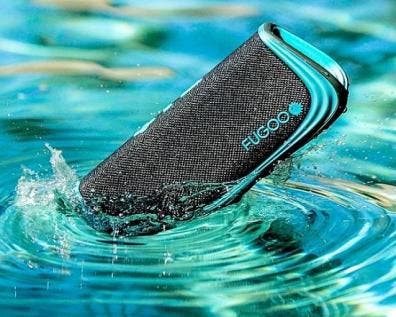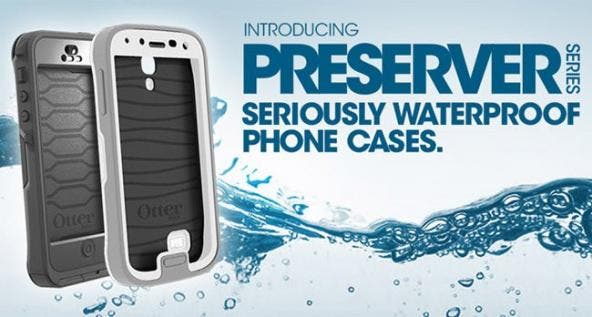![]()
We hear about them all the time these days, ruggedized products that claim to meet or exceed Military Standards, or that refer to IP levels. But what do these designations really mean, and how can they help us make informed decisions when it comes to buying tech accessories or choosing protective gear for our devices?
![What Do IP-Ratings and Military Standards for Rugged Mobile Gear Really Mean?]()
The origins of the Military Standard goes back to the World War II era, when the Army and Air Force released their first specifications detailing an approved formal methodology for putting various equipment to the test, under simulated environmental conditions. Specifically, MIL-STD is a document that establishes uniform technical and engineering standards for various equipment, and includes interface standards, manufacturing process standards, design criteria standards, and test method standards.
The current version of MIL-STD 810G was issued on October 31, 2008, and addresses how to tailor equipment's design and test limits to the conditions that it will likely experience throughout its life. MIL-STD 810G also established chamber test methods which served to replicate the effects of environments on products, rather than having to subject the equipment to the actual environments themselves.
If you cant see this cool video of Otterbox testing their new Resurgence case, click HERE.
Another great example of compliance with military standards is popular smartphone case manufacturer Griffin and their listing of all the ways in which their Survivor cases comply with MIL-STD 810G. The Survivor cases have been tested to withstand:
Wind and wind-blown rain, totaling 200 mm of rainfall over the course of one hour.
A 6-foot drop.
Wind blown dust and dirt at 18 meters a second for 3 hours.
Vibrations of between 20-2000 Hz for 18 hours.
![]()
While MIL-STD 810G is an impressive claim and achievement and some companies make a point of letting buyers know that their products have passed certain tests, it's definitely a case of buyer beware. Just because certain products claim to meet Military Standards, does not necessarily mean that the product has been independently tested and verified, nor does it mean that said product has in fact, been tested at all, as tests and testing equipment can be expensive. So while it is true that if you see a MIL-STD 810G rating on a case or other techie product, it usually means that the product is dependable, durable, and ready to take some abuse, it's always good to do a little research, and read some reviews when possible. Since there is no commercial agency or organization that certifies compliance, vendors, and manufacturers can technically create the test methods for their specific product's application, if they are tested at all. If you want to know more about what tests a manufacturer puts their product through, and whether those tests were performed independently or in-house, don't hesitate to ask them.
![]()
Another term we see getting tossed around a lot has to do with a product's water resistance. Known as an Ingress Protection (IP) rating, this standard lets you know how much you can rely on any given product to keep water and debris (and even hands and fingers) away from what are often sensitive electronic components encased within some type of a protective shell. IP ratings can also apply to impact protection, so there is some overlap between an IP rating an a MIL-STD rating.
Rather than consumers having to rely on ambiguous marketing terms such as waterproof, IP-ratings provide us with specifics standards which determine exactly how impervious a given product actually is. The "IP" code is followed by two digits which indicate conformity with various environmental test conditions. In instances where there is no protection rating regarding certain requirements or standards, the letter X is substituted in that digit's space. The first digit following the "IP" typically refers to solid particle protection and goes from 1–6, with 6 being the highest level of protection from dust, sand etc. The second digit then refers to liquid ingress protection and goes from 1–9K, with 9K indicating that a product is protected against close range, high temperature, and high pressure spraying.
So when companies like Lifeproof or Otterbox say their cases provide IP-68 protection, it means the products in question offer the highest level of dust protection and are suitable for continuous immersion in water under conditions specified by the manufacturer—which in terms of device cases usually means that the case protects an electronic device for 30 minutes submerged at a depth of 6 feet. Another thing you may notice is that in some instances you'll see accessories that display an IP-X6, or IP-X8 rating, for example. These ratings would mean that while the product may not have been tested against wind-blown dust specifically, it is nonetheless, very well sealed and well protected and therefore, a certain level of inherent dust protection can be inferred. Again, buyer beware, it's always good to ask questions of the manufacturer before you invest in a product that may, or may not, meet your criteria.
These days, with all of the ruggedly designed gear available for our mobile devices, it's good to know what packaging labels and marketing materials advertising Military Standards or IP-ratings really mean. To help give a better idea of products that can legitimately lay claim to these rugged criteria, below is a short list featuring some great examples of accessories that meet MIL-STD 810G and/or have high IP-ratings:
![What Do IP-Ratings and Military Standards for Rugged Mobile Gear Really Mean?]()
Grace Digital's Ecostone Bluetooth Waterproof Speaker($149.99) IP-68 and MIL-STD 810
![What Do IP-Ratings and Military Standards for Rugged Mobile Gear Really Mean?]()
Fugoo Bluetooth Waterproof Speaker($199.99-$229.99) IP-67
![What Do IP-Ratings and Military Standards for Rugged Mobile Gear Really Mean?]()
Blue Ant PUMP Bluetooth Waterproof Headphones ($129.95) IP-67
![What Do IP-Ratings and Military Standards for Rugged Mobile Gear Really Mean?]()
Lifeproof Waterproof Cases IP-68 and MIl-STD 810
For iPhone 4–5s: $79.99-$89.99
For iPad: $99.99-$129.99
![What Do IP-Ratings and Military Standards for Rugged Mobile Gear Really Mean?]()
Otterbox Preserver Waterproof Cases ($67.46) IP-X8 and MIL-STD 810
We hope this helps make sense of all the codes and number that you'll so often see on ruggedized mobile gear. Let us know if you have any questions, or experiences with these or other rugged tech products, in the comments below.
 Bloomberg reported Tuesday that Apple's suppliers have now begun manufacturing the next iPad Air and iPad mini. Citing anonymous sources "with knowledge of the matter," the report says that the iPad Air could be announced as early as September, while the mini is expected to be available by the end of the year. In addition, Bloomberg says the new iPads will have an anti-reflection coating on the screen to make it easier to see in bright light. However, they also say that production problems with the coating could restrict manufacturing.
Bloomberg reported Tuesday that Apple's suppliers have now begun manufacturing the next iPad Air and iPad mini. Citing anonymous sources "with knowledge of the matter," the report says that the iPad Air could be announced as early as September, while the mini is expected to be available by the end of the year. In addition, Bloomberg says the new iPads will have an anti-reflection coating on the screen to make it easier to see in bright light. However, they also say that production problems with the coating could restrict manufacturing.






 The iPhone 6 is said to now be undergoing "product validation testing," meaning that Apple is doing test production runs to see how successfully the new phone can be manufactured. According to the rumor, the yield rate is at 90%, which is good enough for Apple to begin mass production. This latest rumor, reported by
The iPhone 6 is said to now be undergoing "product validation testing," meaning that Apple is doing test production runs to see how successfully the new phone can be manufactured. According to the rumor, the yield rate is at 90%, which is good enough for Apple to begin mass production. This latest rumor, reported by 
 Apple is honoring the late Robin Williams with a short
Apple is honoring the late Robin Williams with a short 
















 On Wednesday, AT&T stores began a limited-time offer of a $200 discount on iPads if you buy an iPhone 5s or 5c on their installment plan and sign up for a two-year data contract for the iPad. Of course, you'll want to take into account that the iPhone 6 is expected to be announced next month. If you really want an iPad and will be happy with a current iPhone, then it seems like a good deal. AT&T is likely offering this deal to clear out inventory and to increase the number of iPad users subscribing to their data services. Note that this only applies to a purchase of a cellular data iPad, which costs an additional $130 over the WiFi model. If you purchase the original iPad mini, the discount is even better: $230.
On Wednesday, AT&T stores began a limited-time offer of a $200 discount on iPads if you buy an iPhone 5s or 5c on their installment plan and sign up for a two-year data contract for the iPad. Of course, you'll want to take into account that the iPhone 6 is expected to be announced next month. If you really want an iPad and will be happy with a current iPhone, then it seems like a good deal. AT&T is likely offering this deal to clear out inventory and to increase the number of iPad users subscribing to their data services. Note that this only applies to a purchase of a cellular data iPad, which costs an additional $130 over the WiFi model. If you purchase the original iPad mini, the discount is even better: $230. 

 It's now less than a month until the rumored September 9 announcement of the iPhone 6, and photos of parts have appeared online. Notably, the Taiwanese blog
It's now less than a month until the rumored September 9 announcement of the iPhone 6, and photos of parts have appeared online. Notably, the Taiwanese blog 








 One of the biggest question marks surrounding the iPhone 6 is whether it will use a sapphire crystal display or a sapphire laminate. Thursday's
One of the biggest question marks surrounding the iPhone 6 is whether it will use a sapphire crystal display or a sapphire laminate. Thursday's 













